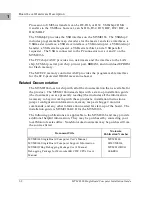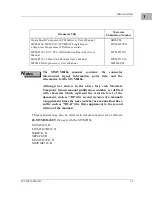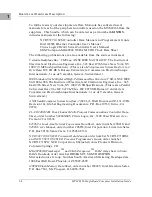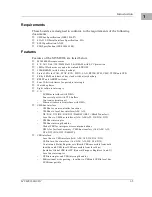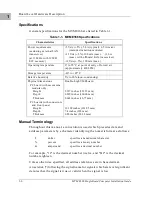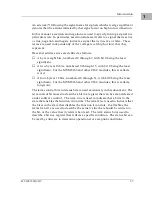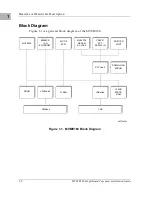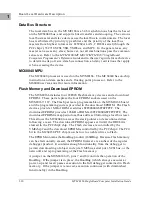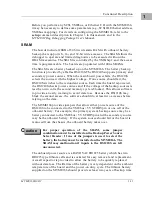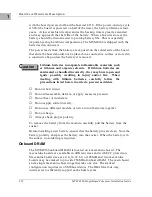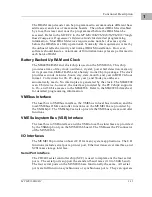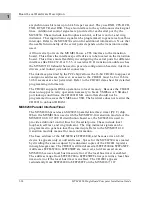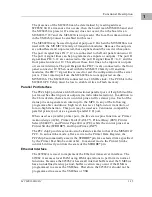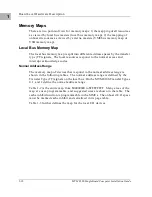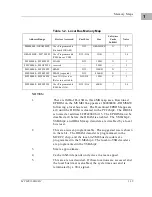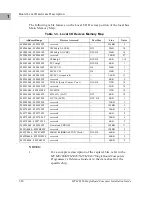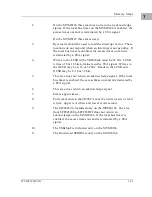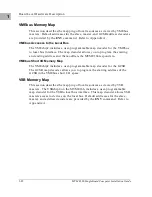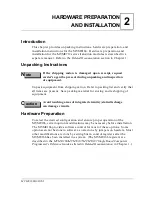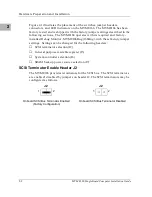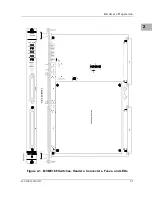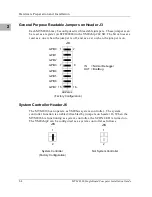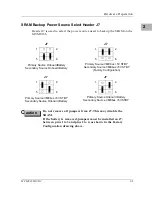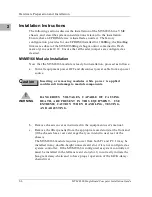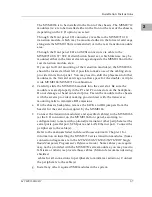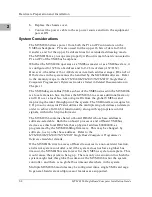
Functional Description
MVME166IG/D2
1-15
1
The presence of the MC68230 can be determined by reading address
$FFF45C00. If a timeout error occurs, then the board is an MVME166 and and
the MC68230 is present. If a timeout does not occur, then the board is an
MVME167/187 and the MC68230 is not present. The local bus timeout timer
in the VMEchip2 must be enabled for this test.
The MC68230 may be used for general purpose I/O when the MVME166 is not
used with the MVME712 family of transition modules. Because the outputs
are unbuffered and unprotected, these signals should be used with caution.
The port A signal lines PA<7..0> are connected to the front panel connector J9.
The port A signal lines can be programmed as inputs or outputs. The port B
signal lines PB<3..0> are connected to the port H signal lines H<4..1> and the
front panel connector J9. This allows these four lines to be inputs or outputs
or receive interrupts. The port B signal line PB<7> is also connected to the front
panel connector J9. When used with the MVME712 family of transition
modules, the PB<7> signal line is used to read the configuration of the serial
ports. Timer interrupts from the MC68230 are not supported on the
MVME166. The MC68230 is connected to a 10 MHz clock. The PC0 bit in the
MC68230 PI/T chip must be low to enable writes to Flash memory.
Parallel Port Interface
The PCCchip2 provides an 8-bit bidirectional parallel port. All eight bits of the
port must be either inputs or outputs (no individual selection). In addition to
the 8 bits of data, there are two control pins and five status pins. Each of the
status pins can generate an interrupt to the MPU in any of the following
programmable conditions: high level, low level, high-to-low transition, or
low-to-high transition. This port may be used as a Centronics-compatible
parallel printer port or as a general parallel I/O port.
When used as a parallel printer port, the five status pins function as: Printer
Acknowledge (ACK), Printer Fault (FAULT*), Printer Busy (BSY), Printer
Select (SELECT), and Printer Paper Error (PE); while the control pins act as
Printer Strobe (STROBE*), and Input Prime (INP*).
The PCCchip2 provides an auto-strobe feature similar to that of the MVME147
PCC. In auto-strobe mode, after a write to the Printer Data Register, the
PCCchip2 automatically asserts the STROBE* pin for a selected time specified
by the Printer Fast Strobe control bit. In manual mode, the Printer Strobe
control bit directly controls the state of the STROBE* pin.
Ethernet Interface
The 82596CA is used to implement the Ethernet transceiver interface. The
82596CA accesses local RAM using DMA operations to perform its normal
functions. Because the 82596CA has small internal buffers and the VMEbus
has an undefined latency period, buffer overrun may occur if the DMA is
programmed to access the VMEbus. Therefore, the 82596CA should not be
programmed to access the VMEbus or VSB.
Summary of Contents for MVME166
Page 1: ...MVME166 Single Board Computer Installation Guide MVME166IG D2 ...
Page 12: ...xii ...
Page 14: ...xiv ...
Page 46: ...Hardware Preparation and Installation 2 10 MVME166 Single Board Computer Installation Guide 2 ...
Page 70: ...Debugger General Information 3 24 MVME166 Single Board Computer Installation Guide 3 ...
Page 114: ...Disk Tape Controller Data B 6 MVME166 Single Board Computer Installation Guide B ...
Page 116: ...Network Controller Data C 2 MVME166 Single Board Computer Installation Guide C ...


